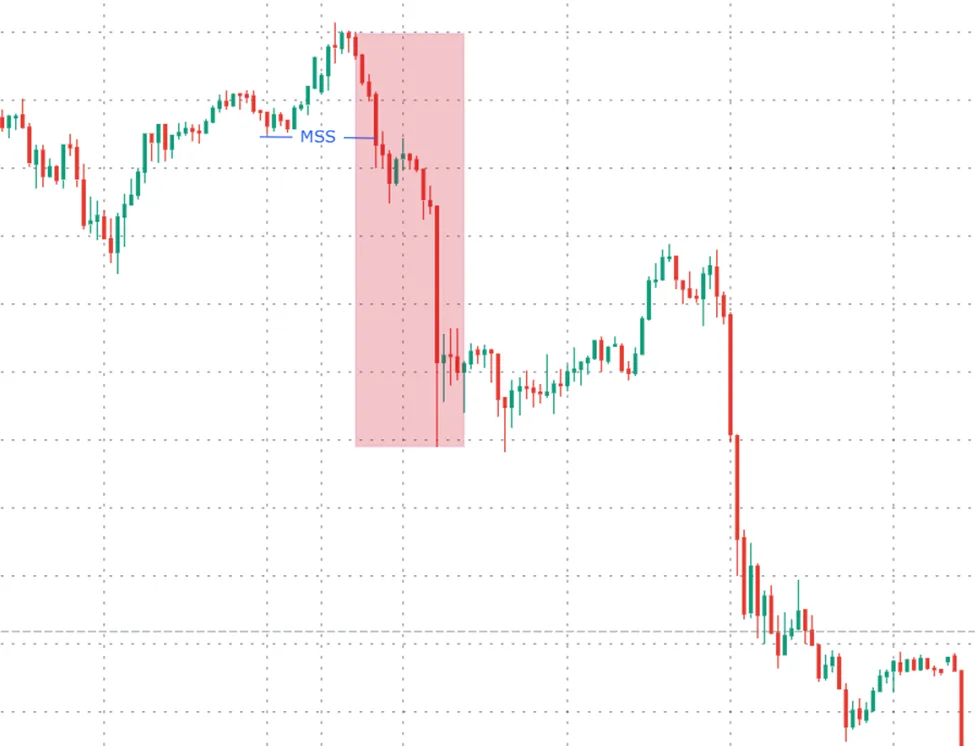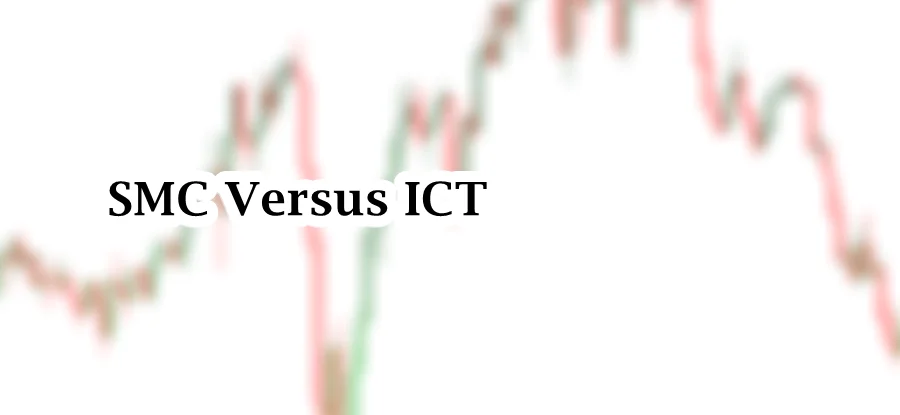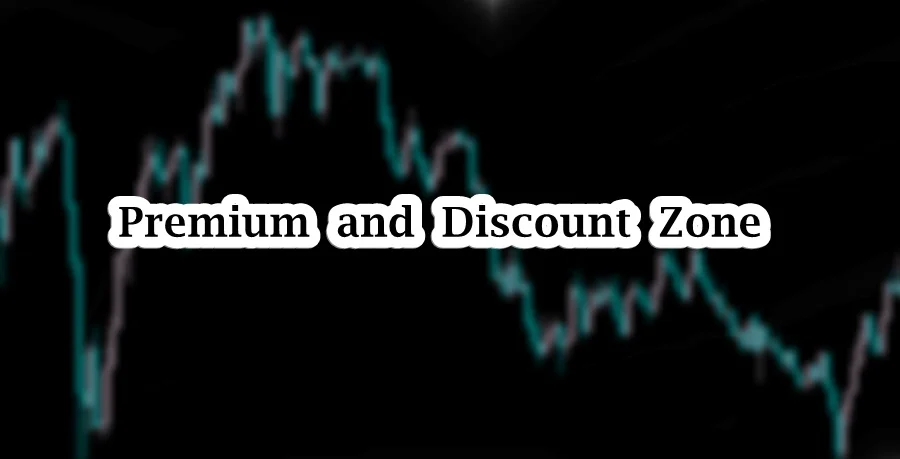
Table of Contents
In price action trading, it is our vital concern to focus on market movements. Quick moves are important on specific levels. Quick moves are known as displacement moves. This move refers to a significant price movement that breaks through a key level, showing a strong intent by the market makers or institutions.
This article focuses on its formation, and its usage in bullish and bearish scenarios.
Understanding ICT Displacement Move
The word “displacement” refers to changing position from one place to another. In trading, it refers to quick price movement from one level of price to another. It indicates strong momentum in that direction. In ICT trading, displacement is crucial concept in analyzing price swings. It signals active involvement of institutions and Smart money. These moves can be either bullish or bearish.
Core idea behind a displacement move is that when price moves quickly and with strong momentum, it reflect large orders entering in the market. These large orders create the powerful movements. This makes displacement move an essential tool for identifying the directional and daily bias and intent of institutions.
Displacement move is the ability to break key support and resistance levels. Break of Structure (BOS) and Change of Character (CHOCH) with displacement move is considered as more valid. It demonstrates that market participants are aligning with the direction of the move. Another important thing is that displacement move often leaves behind technical footprints like Fair Value Gaps (FVG) or Order Blocks. These zones serve as potential retracement or continuation entries. From there we can find high-probability setups.
Characteristics of ICT Displacement Move
The following are the characteristics of ICT displacement move:
- Displacement in trading indicates strong momentum. Displacement move typically involves large candlesticks with little or no wicks. This indicates strong buying or selling pressure. Market often moves in one direction without hesitation.
- Displacement move often breaks key level (such as support or resistance, previous highs or lows, and structure levels). This adds validity to the displacement move.
- Before a displacement move, the market may show signs of inducement, where liquidity is drawn to trap retail traders or lure them into the wrong direction.
- ICT displacement move often exhibit efficient price delivery. This means that price often move quickly filling imbalances and creating new imbalances or FVGs.
ICT strategies are incomplete if HTF market structure is ignored. Structure should be analyzed properly and our strategies should align with overall market structure.
ICT Bullish Displacement Move
A bullish ICT displacement move represents a strong upward movement. It signals bullish momentum. From this move, we conclude that institutional traders are actively driving the market higher.
Not all moves that breaks structure levels are displacement moves. There should be at least three consecutive bullish candlesticks. These candlesticks should have large bodies and small or no wicks. Having no retracement or choppy price action during this price action emphasizes its clarity and strength. It signifies that buyers are firmly in control.
Presence of Fair Value Gap between the candlesticks is considered as a critical confirmation of a bullish displacement move. This gap highlights the efficiency of a price delivery and is a key zone for potential retracements. This concept is used to identify high-probability entry points by targeting FVGs and Order Blocks.
Trading with Bullish Displacement
The following things should be considered before taking any position in the market:
- Market Structure is the first thing in ICT teachings to be analyzed. ICT trader look for bullish market structure in order to trade Bullish Displacement Move.
- In Bullish market structure, price creates a displacement move from HTF PD Array. After that you have to identify ICT Premium Zone.
- After strong bullish move, price retraces back and test premium zone or retraces back to discount area. If price has a clear Market Structure Shift (MSS) in the displacement move, it will serve as confirmations for bullish trade setup.
- The last step will be executing buy side trade by targeting the next draw on liquidity.

ICT Bearish Displacement Move
A bearish ICT displacement move represents a strong downward movement. It signals bearish momentum. From this move, we conclude that institutional traders are actively driving the market lower.
Not all moves that breaks structure levels are displacement moves. There should be at least three consecutive bearish candlesticks. These candlesticks should have large bodies and small or no wicks. Having no retracement or choppy price action during this price action emphasizes its clarity and strength. It signifies that sellers are firmly in control.
Presence of Fair Value Gap between the candlesticks is considered as a critical confirmation of a bearish displacement move. This gap highlights the efficiency of a price delivery and is a key zone for potential retracements. This concept is used to identify high-probability entry points by targeting FVGs and Order Blocks.
Trading with bearish Displacement
The following things should be considered before taking any position in the market:
- Market Structure is the first thing in ICT teachings to be analyzed. ICT trader look for bearish market structure in order to trade bearish Displacement Move.
- In bearish market structure, price creates a displacement move from HTF PD Array. After that you have to identify ICT discount Zone.
- After strong bearish move, price retraces back and test discount zone or retraces back to premium area. If price has a clear MSS in the displacement move, it will serve as confirmations for bearish trade setup.
- The last step will be executing sell side trade by targeting the next draw on liquidity.

Final Note
While ICT displacement moves can provide high-probability trading opportunities, they are not without risks. Rapid price movements may result in unexpected volatility, causing retracements or invalidations. Misinterpreting market structure or entering trades too late can lead to significant losses. It is crucial to practice disciplined risk management, using stop-loss orders and limiting exposure per trade. Displacement moves should always be analyzed in the context of higher time frame trends and market conditions. Trading involves inherent risks, including the potential loss of capital, and may not be suitable for all investors. Always trade responsibly and consider professional advice.
Frequently Asked Questions (FAQs)
What is an ICT displacement move?
An ICT displacement move refers to a strong and rapid price movement in either direction (bullish or bearish), indicating institutional participation. It often breaks significant price levels, leaving technical footprints like Fair Value Gaps (FVGs).
What is the significance of ICT displacement in trading?
ICT displacement helps traders identify the involvement of smart money in the market. These moves signify directional intent and create opportunities for traders to align their positions with the market’s momentum.
Why a Fair Value Gap (FVG) is important?
An FVG is a gap in price action formed during rapid market movement, indicating inefficiencies where no trades occurred. It serves as a potential area for price retracements and high-probability trade entries.
What are the risks associated with trading displacement moves?
Risks include:
Sudden market reversals.
Misinterpreting price action or market structure.
Entering trades too late or at unfavorable prices. Proper risk management and disciplined analysis are essential to mitigate these risks.
How does displacement relate to market structure?
Displacement often breaks key levels like support, resistance, or liquidity zones, confirming shifts in market structure, such as Break of Structure (BOS) or Change of Character (CHOCH).
I’m Abdullah Shah, a content writer with three years of experience in crafting engaging and informative content. My background in market analysis complements my work, allowing me to create content that resonates with audiences. I’m also a seasoned practitioner in the forex and crypto markets, with a strong foundation and deep interest in finance. My passion for the financial world drives me to produce content that is both insightful and valuable for those interested in understanding market trends and financial strategies.





